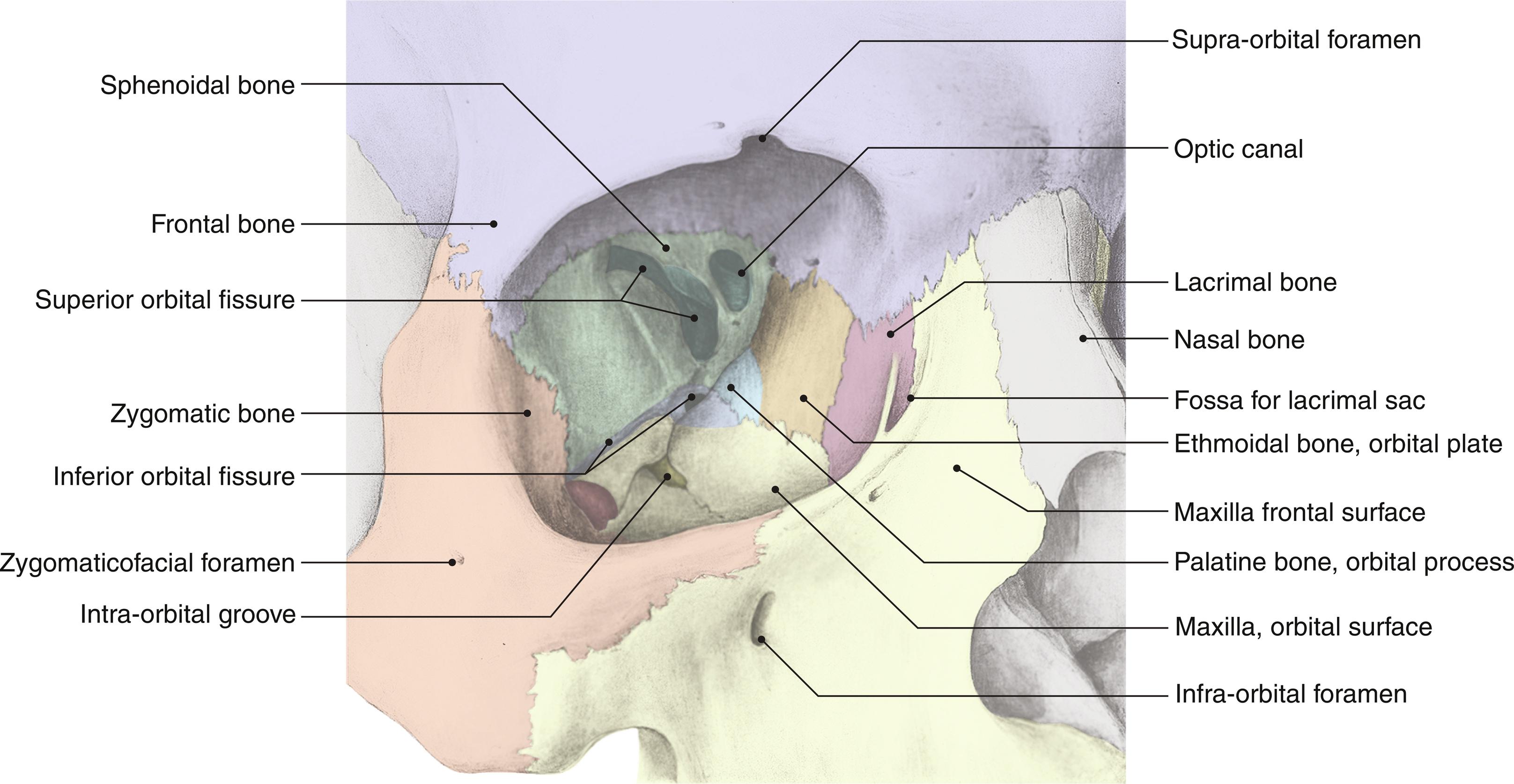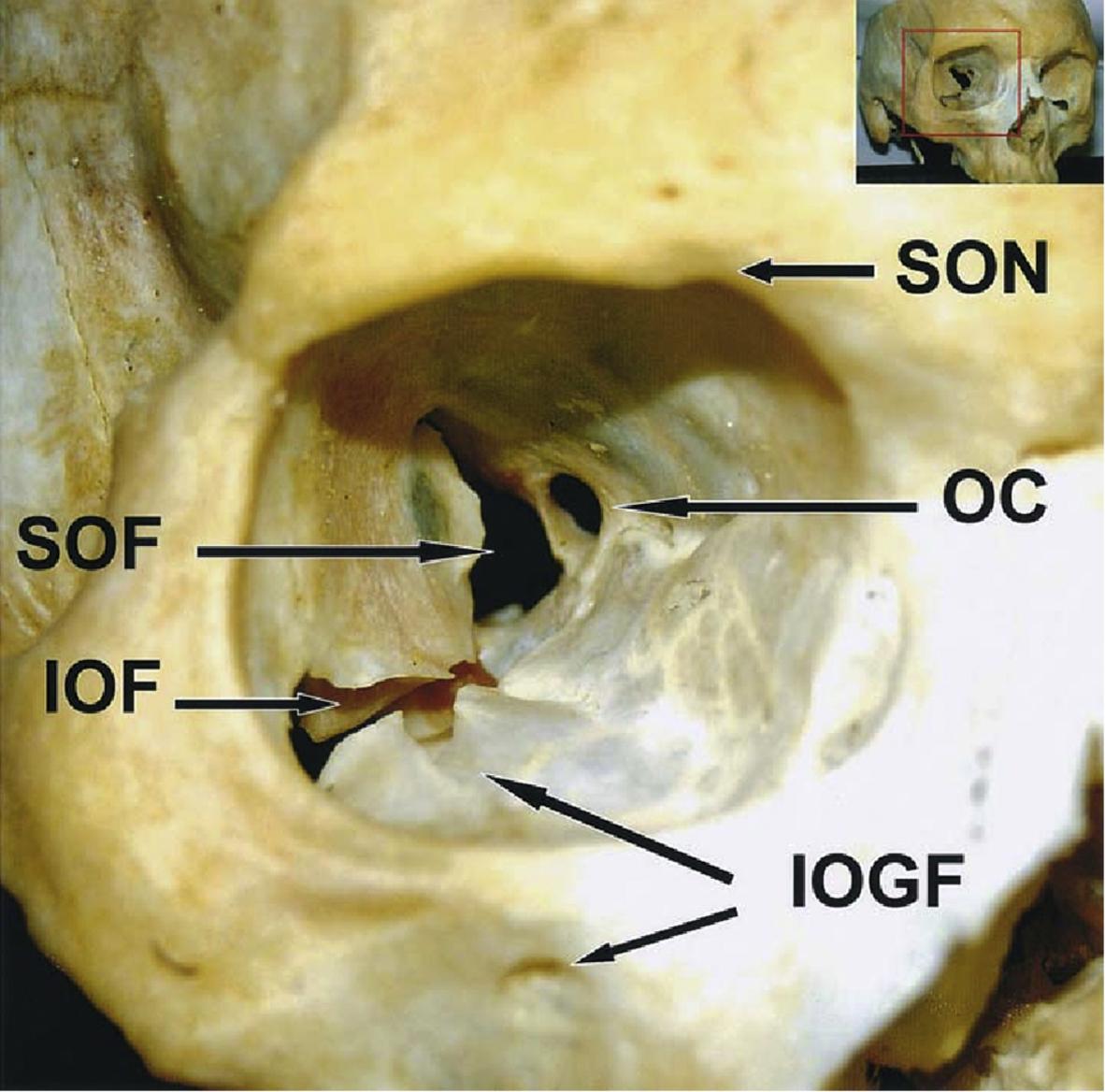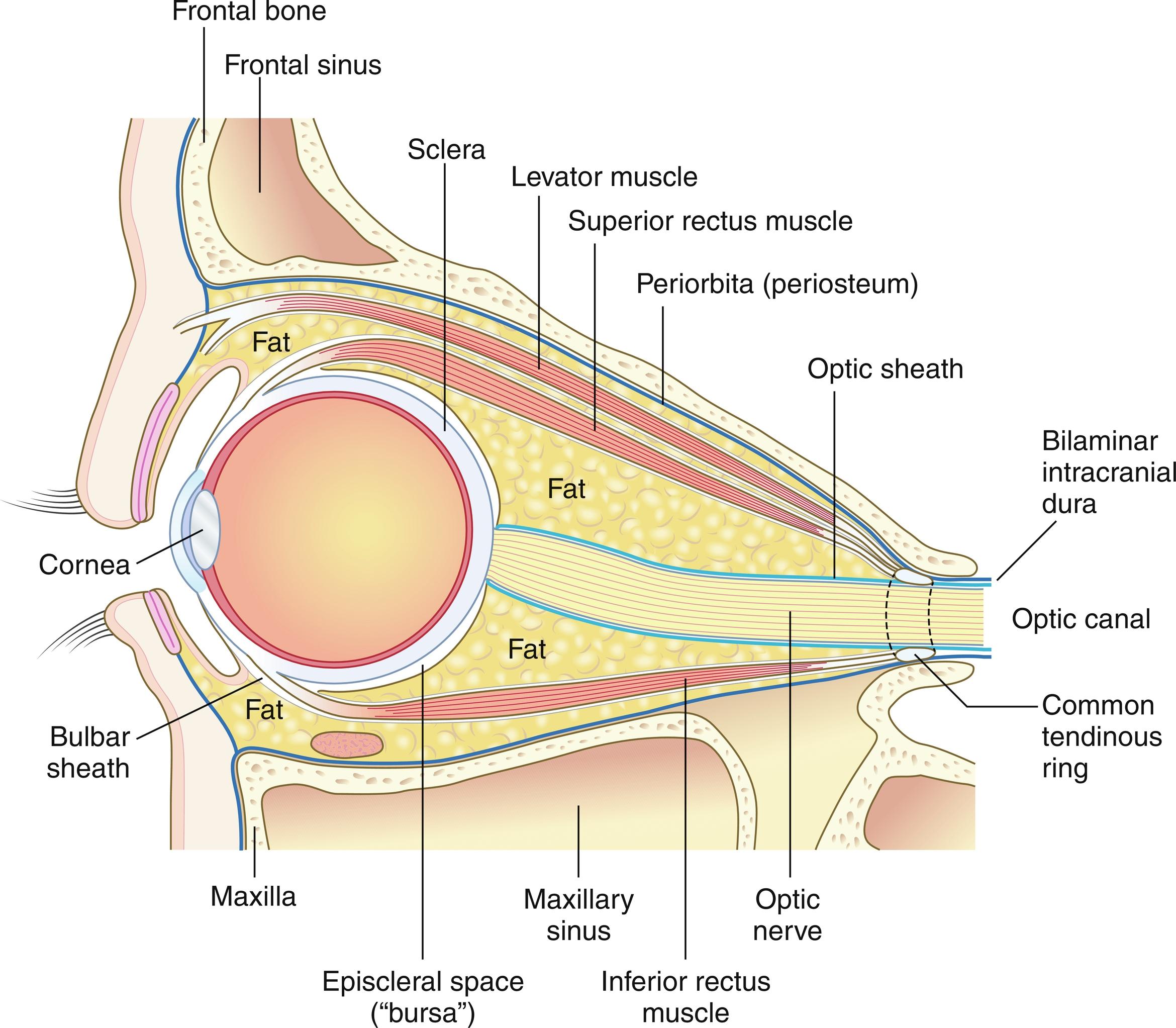Physical Address
304 North Cardinal St.
Dorchester Center, MA 02124
The orbits are the bony spaces that divide the upper facial skeleton from the middle face. The bony walls of the orbit, a four-sided pyramid, consist of a mosaic of seven bones: the zygomatic bone laterally, the frontal bone superiorly, the sphenoid bone posteriorly, with its lesser and greater wing forming the optic canal and the superior orbital fissure, the orbital process of the palatine bone and the maxillary bone inferiorly, along with the lacrimal and ethmoid bone medially (see Fig. 4.1 ).

The roof (superior wall) is thin and concave, formed primarily by the orbital plate of the frontal bone joining the lesser wing of sphenoid near the apex of the orbit. The supraorbital foramen for the supraorbital nerve and vessels is presented in the middle of the supraorbital rim ( Table 4.1 ). The floor (inferior wall) is formed by the orbital surface of maxilla and zygomatic bone and the minute orbital process of palatine bone, separating the orbit from the maxillary sinus. It is traversed by the infraorbital groove that leads to the infraorbital foramen. The floor is separated from the lateral wall by the inferior orbital fissure, which connects the orbit with the pterygopalatine and infratemporal fossa ( Fig. 4.2 ). The medial wall consists of contributions from the orbital plate of the ethmoid, the frontal process of maxilla, the lacrimal bone, and a small part of the body of the sphenoid. The extremely thin ethmoid air cells form a delicate bony structure known as the lamina papyracea, and the thinnest medial wall is perforated by the anterior and posterior ethmoid canal.
| Foramina and Fissures | Contents |
|---|---|
| Supraorbital foramen | Supraorbital nerve (V1) |
| Infraorbital foramen | Infraorbital nerve (V2) |
| Superior orbital fissure | Oculomotor (II), trochlear (IV), abducens nerve (VI), opjthalmic branches (V1) |
| Inferior orbital fissure | Maxillary nerve branches (V2), zygomatic nerve, sphenopalatine ganglion branches, infraorbital artery and vein, inferior ophthalmic vein (leading to pterygoid plexus) |
| Optic canal | Optic nerve (II), ophthalmic artery |
| Ethmoidal canals | Anterior and posterior ethmoidal artery |
| ⁎ Annulus of Zinn | Superior division of cranial nerve III, nasociliary nerve (V1), sympathetic root of cervical ganglion, inferior division of cranial nerve III, cranial nerve VI, superior ophthalmic vein |

The lacrimal groove for the nasolacrimal duct is located anteriorly. The posterior portion leads to the superior orbital fissure, a dehiscence between the two wings of the sphenoid bone that provides a passage for orbital nerves and vessels and corresponds to the anterior wall of the cavernous sinus, representing a line of communication between the middle cerebral fossa and the orbit. The summit or apex of the orbit precisely coincides with the bulging portion of the superior orbital fissure. Above and medially is the exocranial foramen of the optic canal, which gives passage to the optic nerve with its meningeal sheath and the ophthalmic artery, presenting a site of communication between the orbit and the anterior cranial fossa.
At a small bony protuberance of the sphenoidal wing, the common tendinous ring (tendon of Zinn) is attached. The ring encircles the optic foramen and the central portion of the superior orbital fissure. The lateral wall is formed by the frontal process of zygomatic bone in front and by the orbital plate of the greater wing of sphenoid in the posterior two-thirds. The bones meet at the zygomaticosphenoid suture. The lateral wall is the thickest and separates the orbit from the cerebral temporal fossa and the temporal muscle.
The periorbita forms the periosteum of the orbit. It is loosely attached to the orbital bony walls, except for suture lines, fissures, and foramens of the orbit. It expands forward up to the orbital rim, to which it is strongly attached, and then merges with the cranial periosteum. It also sends out extensions toward the peripheral tarsal rim to form the orbital septum, which delineates the orbit in front and separates the intraorbital fat from the orbicular muscle of the eye. On the orbital surface of the optic canal and the medial aspect of the superior orbital fissure, the periorbita thickens, forming the tendinous attachments of the four rectus muscles, the levator palpebrae superioris and the superior oblique muscles, creating a tendinous ring known as the annulus of Zinn. Medially it is attached to the posterior lacrimal crest and forms the lacrimal sac. The periorbita thus surrounds the contents of the orbit, posteriorly expanding around the optic canal and superior orbital fissure, continuous with the optic nerve sheath, and then finally ends up united with the dura mater. Throughout, it is perforated by the various vessels and nerves of the orbit and closes the inferior orbital fissure ( Fig. 4.3 ).

Become a Clinical Tree membership for Full access and enjoy Unlimited articles
If you are a member. Log in here